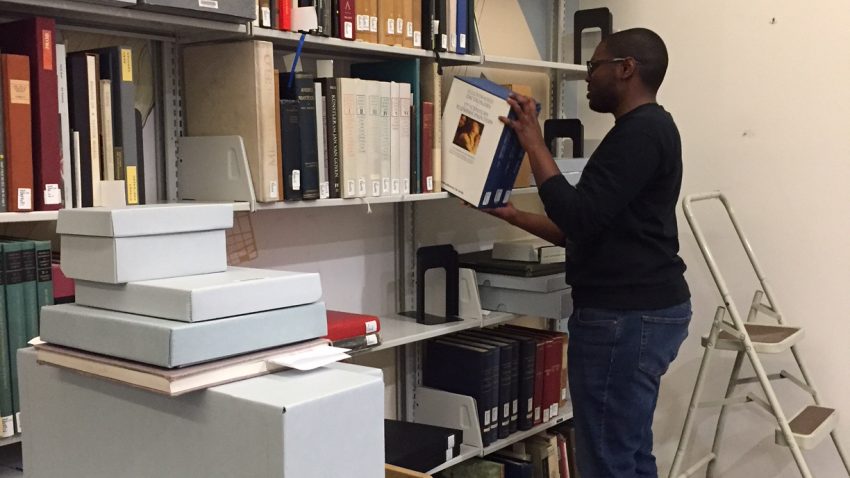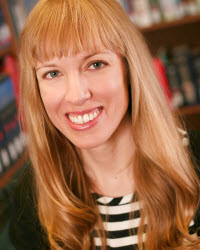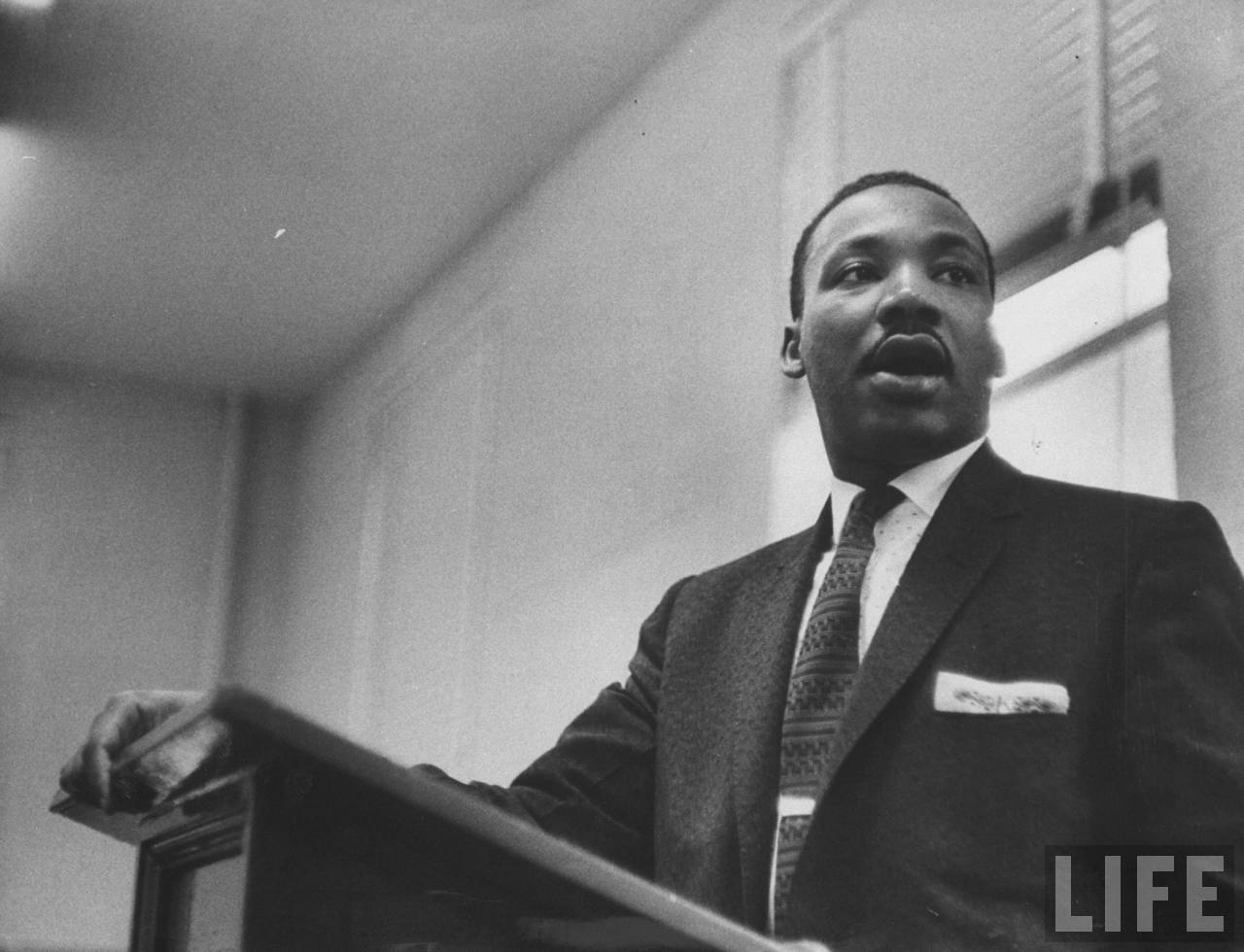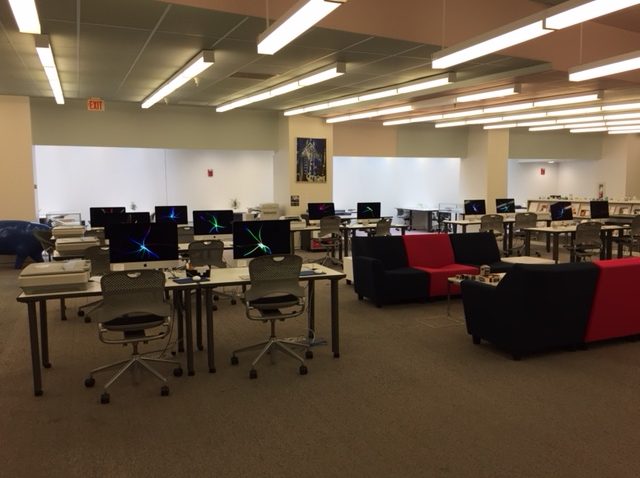
Leslie Schick poses in the Walter C. Langsam Library, 2018
This December, the University of Cincinnati Libraries will say goodbye to a valuable employee and one that has played a central part in great change in the Libraries. Leslie Schick, senior associate dean of library services and director of the Donald C. Harrison Health Sciences Library, will be retire at the end of UC’s fall term.
Leslie has enjoyed a long, storied career with the university, beginning as an information services librarian with UC’s Health Sciences Library.
“When I started, everything was print. We had card catalogs – none of the local, regional or international online library catalogs we do now,” Leslie remarked. “When people would come looking for a particular book, if we didn’t have it in our card catalog, meaning we didn’t own it at the Health Sciences Library, as a reference librarian I’d pick up the phone and call other libraries. If it was a nursing book, for example, I would call the Raymond Walters Library (the former name for UC Blue Ash) to see if they might have it because they had a nursing program. You would have to think about who at the university might have this book and then you would call that library. It was our own version of OhioLINK or Interlibrary Loan. Looking back…the whole world has changed.”

Leslie with her fellow reference librarians in the 1980s
Over the course of her career, Leslie has seen an incredible amount of change. This nurtured a deep appreciation for her colleagues, one that would serve her well as her responsibilities increased and she took on roles in library management. She watched as new waves of talent joined the library, as well as those times when years of institutional knowledge were lost to retirements.
“For some people, the change from print to online was more difficult. We had the most amazing reference librarian at the Health Sciences Library when I started, Ruth Epstein. She’d come from the hospital library, which was consolidated into the medical center libraries when it was formed in 1974. Whenever someone had a difficult question in our library, she’d be the one to find the answer. We had a site visit for one of our IAIMS grants (Integrated Advanced Information Management Systems) back in the 80s, and one of the members of the site team asked her one the most awful reference questions anyone could think of. After she found what they were looking for they told her that they’d asked the same question at over 25 academic health science libraries in the country and she was the only person who’d given them an answer. She read everything, every issue of 15 to 20 medical journals – she said that was how you kept on top of things. That was the old-school way. When we started putting a computer at our reference desk and moving away from the traditional card catalogue, she retired…she wasn’t able to deal with the change.” Continue reading →







